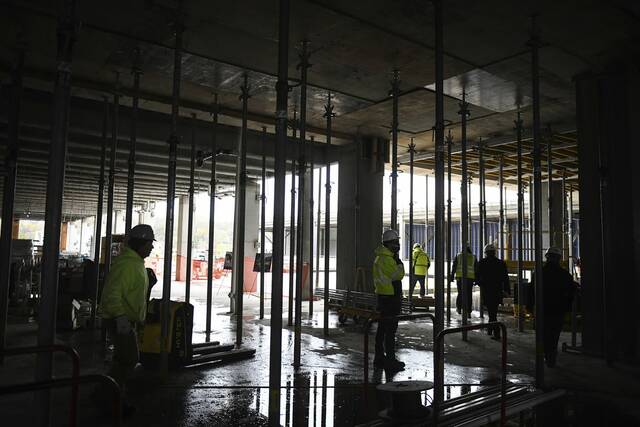Pittsburgh region's jobless rate falls to 5.9%; labor force shrinks
The Pittsburgh region’s unemployment rate in October fell below 6% for the first time since the pandemic took hold of the economy in April 2020, a combination of more jobs being filled and, once again, fewer people in the labor force.
“It’s just as if the economy is stuck in neutral. It just can’t get going,” said Frank Gamrat, an economist and executive director of the Allegheny Institute for Public Policy, a think tank based in Castle Shannon.
The seven-county Pittsburgh region — Allegheny, Armstrong, Beaver, Butler, Fayette, Washington and Westmoreland — saw its unemployment rate drop two-tenths of a percentage point from September to 5.9%, based on seasonal hiring factors, according to the state’s Center for Workforce Information and Analysis. A year ago, before the vaccines against covid were available, the region’s unemployment rate was 6.8%.
The unemployment rate for October is slightly below the 10-year average jobless rate of 6.0%, said Chris Briem, regional economist for the University of Pittsburgh’s Center for Social and Urban Research.
If the region’s economy was growing coming out of the recession, the jobless rate would have temporarily increased as more people returned to the labor force to look for work, Gamrat said.
With so many businesses seeking workers to fill longtime vacancies, the state said that 700 workers dropped out of the region’s labor force — those working or looking for work — in October, despite the elimination of extra federal unemployment benefits at the beginning of September. The labor force had 1.164 million people in October, but that’s 2,500 fewer workers than a year ago and 52,000 less than the prepandemic count two years ago.
“It’s still flat. There’s not a mass of people to come back” to work, Briem said.
Gamrat said he would have expected more people would have returned to work, raising speculation that some older members of the labor force still are concerned about their health and won’t go back to their jobs.
The labor force has shrunk so much that the region’s pool of workers has not been this shallow since October 1999, Gamrat said.
The region’s employers did find 2,600 workers to fill some of those jobs in October, raising the total nonfarm employment to 1.126 million, about 25,000 more than last year, also based on seasonal hiring factors.
The Pittsburgh area has not experienced “a clawback to prepandemic levels” as other regions have, Briem said.
Although the raw count of nonfarm jobs rose by 9,000 in October, the economy still is well below the prepandemic levels. There were 1.137 million jobs in October , but that’s about 68,000 fewer than in October 2019.
Among the seven-county area, Allegheny had a 4.9% jobless rate in October, down 0.5%, and Westmoreland had a 5.2% rate, down 0.4%. Unemployment was highest in Fayette, which was at 7.5%, down 0.8%.
Joe Napsha is a TribLive reporter covering Irwin, North Huntingdon and the Norwin School District. He also writes about business issues. He grew up on Neville Island and has worked at the Trib since the early 1980s. He can be reached at jnapsha@triblive.com.
Remove the ads from your TribLIVE reading experience but still support the journalists who create the content with TribLIVE Ad-Free.

